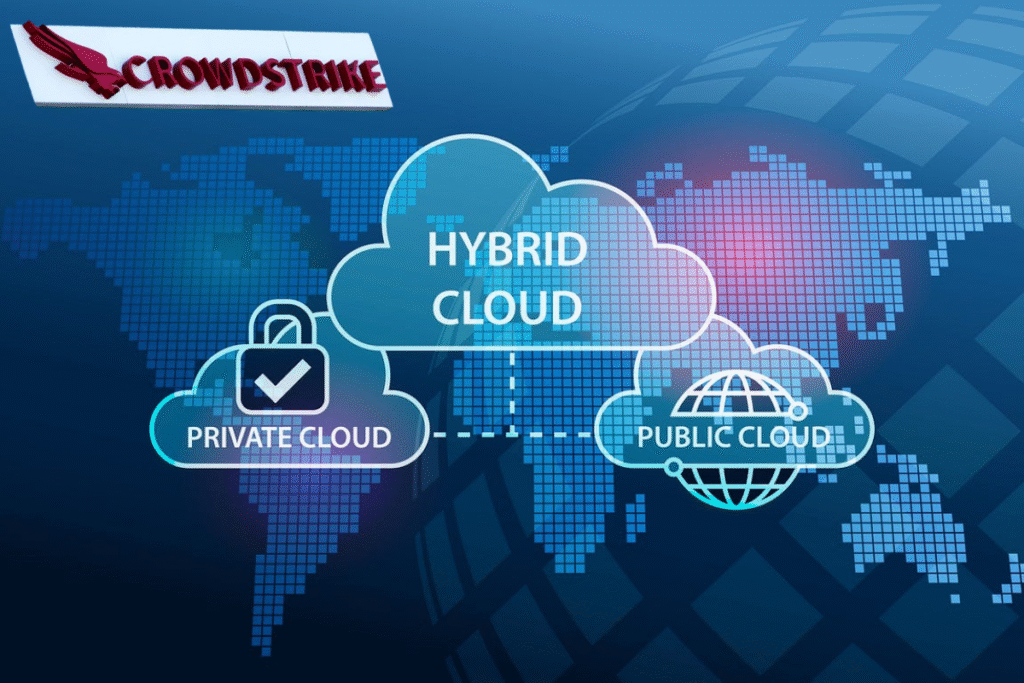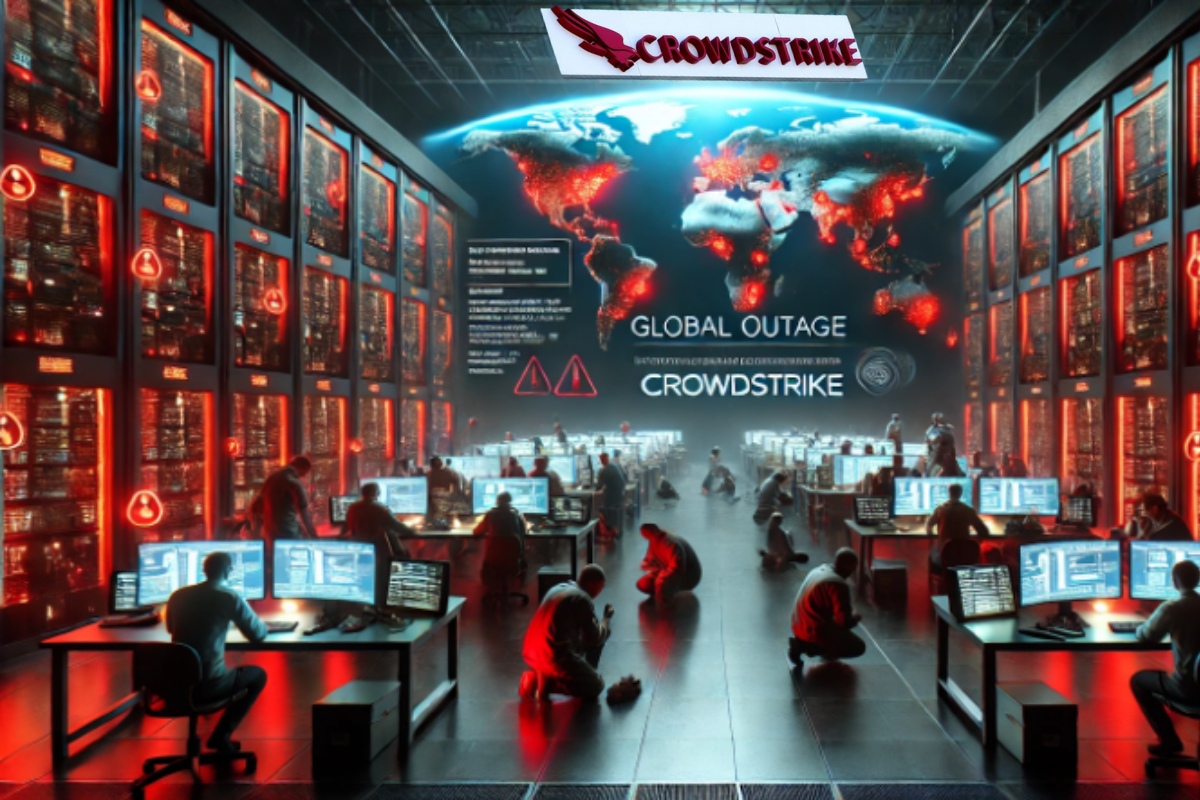In July 2025, the tech community was shaken to its core as the CrowdStrike outage brought businesses, governments, and service providers worldwide to a standstill. CrowdStrike is a leading cybersecurity company that offers endpoint protection solutions to thousands of organizations worldwide. The outage was caused by a buggy software update that was causing devices to crash or hang, impacting critical systems across sectors. For most businesses, normal business operation came to a standstill, with IT staff in chaos struggling to restore functionality.
What made the CrowdStrike outage so severe was its cascade effect. Because CrowdStrike products are tightly embedded in operating systems and enterprise networks, a tiny flaw was quickly duplicated to millions of devices. Multiplying the chaos, many systems that relied on Windows were also affected, leading to what had become known as the microsoft outages crowdstrike crisis. Airlines, hospitals, banks, and websites saw massive slowdowns or complete shutdowns, affecting customers and personnel.
The Microsoft outages crowdstrike experience referred to the degree to which contemporary IT ecosystems are networked. The breakdown of a major vendor shakes the global tech world. The outage also reminded organizations of the necessity for backup and offline systems of contingency.
Key Events That Led to the International CrowdStrike Outage
The 2025 CrowdStrike outage did not catch anyone off guard but was the culmination of a series of technical and operational errors that snowballed into one of the world’s biggest IT disruptions in recent times. The following is an accurate chronology of the key events that led the worldwide crisis:
- Defective Update Rolled Out – CrowdStrike issued a routine security update to its Falcon platform. Regrettably, the update contained a bug that caused system files to fire out of place and cause widespread device crashes.
- Rapid Rollout Across Devices – The update was rolled out across millions of devices in a matter of hours, making it impossible to stop the spread once the error was seen.
- Windows Systems Highly Affected – The majority of the affected devices were Windows-based, leading to extensive Microsoft outages and crowdstrike events in government, financial institutions, and transport services.
- Air Delays and Cancellations Around the World – Scheduling and check-in systems collapsed, grounding flights and stranding passengers across various nations.
- Healthcare and Emergency Services Disruption – Hospitals experienced delay in accessing patient records, with technical delays in emergency response systems. These were also contributed by Microsoft outages and crowdstrike issues.
- Corporate IT Shutdowns – The majority of companies had to shut down entirely to prevent further spread of the effects of CrowdStrike outage.
- Emergency Patch Deployment – CrowdStrike engineers worked jointly with Microsoft to deploy patches, first focusing on industries that faced serious downtime due to the microsoft outages crowdstrike chain reaction.
This sequence of events demonstrates how a single buggy update can cause a ripple effect across the entire global technology economy. The CrowdStrike outage was a watershed in 2025, which taught IT personnel the importance of thorough pre-release testing and proper rollback procedures.
CrowdStrike Outage Broke Enterprise Systems
The CrowdStrike 2025 outage caused a giant ripple on enterprise systems and cloud-based systems across the world. Since CrowdStrike’s Falcon software is deeply entrenched in endpoint devices, virtual machines, and servers, the problematic update spread quickly to on-premises and cloud environments. Many organizations that heavily depended on cloud applications could not access critical tools, halting productivity.

Enterprise software, including ERP systems, customer relationship management packages, and supply chain software, was among the hardest hit. As machines froze or crashed, IT support teams scrambled to isolate the infected systems. Cloud providers also suffered as thousands of connected devices that normally talk to each other continuously spewed out repetitive error messages. This created additional unwanted load on servers, further complicating cleanup.
While engineers grappled with deploying a crowdstrike outage solution, companies had to resort to short-term fixes, such as rolling back to offline mode or using redundant systems. Not every company, however, had robust disaster recovery strategies in place, which prolonged downtime and increased financial losses.
Cybersecurity Lessons Learned from the CrowdStrike
The 2025 CrowdStrike outage was not just a fleeting glitch—it was an alarm call for the global cybersecurity community. The incident illustrated how seemingly dependable security platforms can abruptly collapse, resulting in widespread downtime to businesses, governments, and public utilities. The incident emphasized the importance of resilience, redundancy, and forward-planning in modern IT infrastructures.
One of the primary lessons derived from the crowdstrike.outage is to possess multi-layered security controls. Having a single vendor for endpoint protection may be convenient, but it is also a single point of failure. Organizations that had other backup controls and possessed complementary security solutions were faster in recovering systems and reducing operational downtime.
The second critical lesson from the CrowdStrike outage was communication. Those companies that immediately informed workers, customers, and partners regarding the outage limited confusion and maintained trust. Open and timely communication became a critical factor in crisis management in this event.
The Fixes and Patches
With the 2025 CrowdStrike outage that caused widespread system crashes, the number one goal of engineers was to identify the faulty update and implement a functioning fix. CrowdStrike was quick to take blame, affirming that a corrupted configuration file within its Falcon software was the culprit. The fix did not just repair the issue, but also restored impacted devices to be capable of restarting and operating normally without crashing once more.
To address the crisis, CrowdStrike’s technical staff cooperated hand in glove with Microsoft as the majority of the infected machines were Windows-based. This process was commonly known as the microsoft crowdstrike outage recovery process. Engineers developed a step-by-step restoration patch, which was rolled out in stages to avoid adding to the disruption.
The first part was in preventing the flawed update from propagating. The second part included installing a script to remove the buggy file, a tested microsoft crowdstrike outage patch restoring core system function. IT communities in several industries were given step-by-step guides for manually applying the repair on machines that could not access automated update services.
Impact on IT Infrastructure and Network Operations
The CrowdStrike outage of 2025 was among the most impactful technology disruptions in recent history, reaching IT infrastructure and network operations globally. Since CrowdStrike’s Falcon platform is deeply integrated into enterprise systems, the corrupted update triggered a chain of technical failures across sectors. The event also became closely associated with the Microsoft crowdstrike outage, as most hit systems were Windows-based, making the magnitude of the disruption greater.
The significant impacts of the CrowdStrike outage on network and IT infrastructures include:
- Mass Endpoint Crashes – The faulty update caused multiple million endpoints to crash, both on-premises and remote. This brought core business processes in different industries to a grinding halt.
- Overloading Network Traffic – Device malfunction error loops overloaded internal and cloud networks with unnecessary traffic, slowing down or stopping pertinent services altogether.
- Cloud Service Outages – Integration issues during the microsoft crowdstrike outage resulted in downtime for essential cloud-hosted applications that impacted communication, collaboration, and information processing software.
- Security Holes – Without security software online, most organizations were temporarily left unsecured, increasing the risks of cyber attacks.
- Slow Response to Incidents – IT personnel had to manually quarantine and restore malfunctioning machines, elongating recovery periods and prolonging network instability.
- Cross-Industry Disruptions – From airlines to hospitals, the combined effect of CrowdStrike outage and microsoft crowdstrike outage slowed down services that were reliant on immediate access to data.
- Financial Losses – Prolonged downtime caused significant revenue loss, especially for firms that did not have adequate backup systems.
The CrowdStrike outage showed how a single failure of an update could ripple through global IT infrastructure. It once again underlined the importance of disaster recovery plans, backup networks, and multi-vendor security plans to prevent singularity of reliance on a single platform.
Preventing Large-Scale Outages in a Digital-First World
The microsoft crowdstrike outage of 2025 was a chilling demonstration of how advanced security mechanisms can go wrong and bring the world to a standstill. With the world being increasingly digital-first, where companies depend on seamless access to cloud services, real-time communication, and automation, such outages must be avoided at all costs. The incident showed how a single glitch update could snowball into a global disaster, as seen in the Microsoft crowdstrike outage.
The most effective prevention tactic is diversification of security solutions. To have only one endpoint protection vendor, as great as it is, is a single point of failure. Organizations that layered their protection before the CrowdStrike downtime recovered faster and were still able to run partly.
Regular disaster recovery drills are also required. The exercises prepare IT staff to respond immediately, isolate affected systems, and restore functions online. During the microsoft crowdstrike outage, companies with documented recovery playbooks and offline backup shortened downtime for those without systematic plans.
Frequently Asked Questions
1. What caused the 2025 CrowdStrike outage?
A faulty update in CrowdStrike’s Falcon platform caused devices to crash, which initiated widespread disruption across industries.
2. How long did it take to restore systems?
Most systems returned to operation within a few days, but key industries like healthcare and airlines took longer to return.
3. Which industries were impacted the most?
Airlines, hospitals, banks, government, and cloud computing services took the biggest hit from their reliance on Windows-based systems.
4. Was prevention of this sort of outage possible?
Yes, better pre-release testing, rollouts of updates in phases, and multi-layered security solutions could have toned down the damage.
5. What can be learned from this incident by businesses?
The CrowdStrike outage proved the worth of disaster recovery plans, backups of systems, and having alternative security protection available.
Key Takeaways
The CrowdStrike outage of 2025 was a turning point for the tech world, revealing to humanity just how embedded modern IT systems are. It took only one buggy update in the Falcon security software to get devices crashing across the world, bringing businesses, government agencies, and vital services to a standstill worldwide. The outage was forthwith labeled as one of the largest digital disruptions in history.
Perhaps most important is the lesson of the importance of having robust disaster recovery plans. Organizations that had backup infrastructure and duplicate security provisions in place were able to restrict downtime and recover more quickly. Others that lacked these safeguards faced extended outages and greater operational losses.
Finally, the crowdstrike outage’ reminded us once again that cybersecurity is not about keeping the bad guys out—it’s about being prepared for every disruption, either through malicious behavior or human error. The businesses that learn from this incident will be set to address future problems in our increasingly digital-first world.
For more : Signal Boosted: Best TV Antenna Indoor for Smart TVs & Devices


